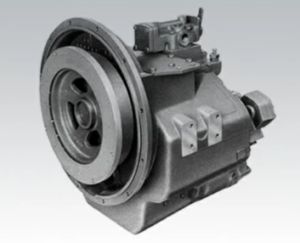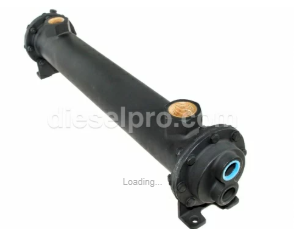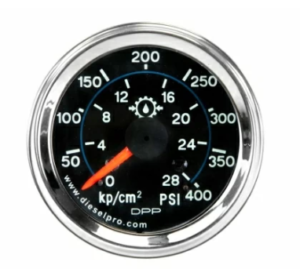

Parts Catalog for Twin Disc MG5091 Marine Transmissions
Rebuilt Twin Disc MG5091 Marine Transmissions
Plate Kit For Twin Disc MG5091 Marine Transmission
Gasket Kits For Twin Disc MG5091 Marine Transmission
Proper lubrication is the foundation of reliable marine transmission performance, and this is especially true for the Twin Disc MG-5091 Marine Gear. This gearbox operates under high hydraulic pressure, tight tolerances, and continuous-duty cycles — all of which demand strict adherence to oil specifications, change intervals, and filtration requirements.
Choosing the right fluid and following a disciplined maintenance schedule dramatically reduces wear on clutch packs, gears, and bearings. It also ensures proper engagement, torque transfer, and cooling — even under the demanding conditions faced by workboats, fishing fleets, and offshore commercial vessels.
This comprehensive guide breaks down everything you need to know about the lubrication system of the MG-5091: from oil types and viscosity requirements, to break-in intervals, to filter maintenance and replacement procedures.
Approved Oil Types for Twin Disc MG-5091 Marine Gear

Using the correct oil in your MG-5091 transmission is not just a suggestion — it is a requirement for maintaining hydraulic pressure, preventing clutch slippage, and preserving the life of seals and internal components. Marine gearboxes like the MG-5091 are extremely sensitive to fluid viscosity, additive content, and cleanliness.
The wrong oil can result in:
- Low oil pressure
- Delayed gear engagement
- Internal overheating
- Clutch chatter or slipping
- Degradation of seals and O-rings
Below is a detailed guide to selecting the correct fluid for your unit.
Viscosity Requirements
Viscosity refers to a fluid’s resistance to flow. For the Twin Disc MG-5091, viscosity is critical because it affects:
- Hydraulic pressure in clutch actuation
- Lubrication film strength on rotating components
- Heat transfer from internal components to the oil cooler
Recommended Viscosity Range (SAE):
| Ambient Temp | Recommended Oil Viscosity |
| Below 32°F (0°C) | SAE 10W or SAE 20W |
| 32°F to 77°F (0–25°C) | SAE 30 |
| Above 77°F (25°C) | SAE 40 |
Important Notes:
- SAE 30 is the most common and balanced option for most climates.
- SAE 40 offers higher protection in tropical and high-load environments.
- Never use multi-grade oils with detergents or friction modifiers (e.g., 15W-40 engine oil), as they can interfere with clutch performance.
Always ensure the oil meets Twin Disc’s listed specification for hydraulic and gear applications. When in doubt, consult your supplier or reach out to Diesel Pro Power for cross-reference.
Compatible Brands
While there are many generic oils that meet SAE viscosity standards, not all of them are tested or approved for use in marine hydraulic transmissions. Use of incompatible oils may void your rebuild warranty or lead to long-term damage.
Below are some trusted, widely used oils compatible with the MG-5091:
Mineral-Based Oils:
- Twin Disc TD-Fluid 10W, 30, or 40
- Mobil DTE 15M (ISO VG 68)
- Shell TELLUS S2 M32 or M46
- Chevron Rando HD 32 / HD 68
- ExxonMobil NUTO H 32 / H 68
- Texaco Regal R&O 32 or 46
- Phillips 66 Megaflow AW Hydraulic Oils
Synthetic (Consult Manufacturer Before Use):
- Amsoil Synthetic AW Hydraulic Oil
- Royal Purple Synfilm 32 or 68
Do Not Use:
- Automotive engine oils (with detergents or zinc additives)
- Tractor or ATF-type fluids (too thin or with incorrect additives)
- Used, recycled, or reclaimed oils
Pro Tip: Always purchase your oil from a reliable supplier with high turnover to avoid long-term storage degradation.
Oil Change Intervals for Twin Disc MG-5091 Marine Gear
Regular oil changes are one of the most cost-effective ways to extend the life of your MG-5091. Over time, oil degrades due to heat, shear, and contamination from metal particles, clutch debris, and condensation. Replacing oil on schedule helps prevent internal scoring, overheating, and premature component failure.
Initial Break-In Period
If your Twin Disc MG-5091 has just been:
- Rebuilt
- Installed new
- Replaced with a remanufactured unit
…then the first oil change is critical to remove break-in debris and ensure smooth performance.
Break-In Oil Change Guidelines:
- Change oil and filter after the first 25 to 50 operating hours
- Inspect oil for metallic particles or dark discoloration
- Cut open filter to inspect internal pleats for contamination
- Check for proper pressure and temperature during the break-in window
During the first few days of operation, monitor oil levels daily and listen for abnormal noises or vibration.
Regular Change Schedule
After break-in, follow a consistent oil change interval based on your operating environment and duty cycle.
Suggested Oil Change Frequency:
| Usage Type | Change Interval (Hours) |
| Light Duty (Pleasure Craft) | 300–500 hours |
| Commercial/Industrial (Continuous) | 250 hours |
| Towing / Fishing / Trawling | 150–200 hours (or monthly) |
| Severe Duty / High Temps | 100–150 hours |
Always adjust the interval based on:
- Ambient temperature
- Oil analysis results
- Workload intensity (high-reverse shifting, full-throttle use)
- Evidence of contamination (water ingress, sludge, etc.)
Signs It’s Time for an Early Oil Change
- Oil smells burnt
- Gear engagement is delayed
- Visible darkening or discoloration of oil
- Oil appears milky (indicates water contamination)
- Clutch slipping under load
If any of the above occur, change the oil and inspect for internal damage before resuming operations.
Oil Filter Maintenance for Twin Disc MG-5091 Marine Gear
The oil filter in your MG-5091 marine gear is responsible for removing debris, metal shavings, and contaminants from the system. Even the best oil becomes dangerous if it’s full of particles grinding away at your gears and clutch packs.
Routine filter maintenance is non-negotiable — clean, unimpeded filtration ensures stable oil pressure, effective hydraulic operation, and long component life.
Types of Oil Filters on MG-5091
- Internal Suction Screen
- Found inside the housing
- Protects pump from large contaminants
- External Inline Filter (Spin-On or Canister)
- Used in closed-loop cooling or hydraulic systems
- May be optional based on build spec
- Magnetic Drain Plug
- Collects fine ferrous particles
- Should be inspected at every oil change
Filter Replacement Process
Follow this step-by-step process when replacing your oil filter:
Tools and Supplies Needed:

- New filter or screen (OEM or premium aftermarket)
- Oil drain pan
- Wrench or filter strap (for spin-on)
- Clean rags
- Fresh oil
- Gloves and PPE
Step-by-Step Instructions:
- Warm Up the Engine (Optional)
- Run engine for 5–10 minutes to warm the oil
- Makes draining more complete
- Shut Off Engine and Disconnect Battery
- Lockout/tagout if required by policy
- Lockout/tagout if required by policy
- Drain Old Oil
- Remove drain plug and collect oil
- Dispose of used oil according to local regulations
- Remove Old Filter
- Spin off canister filter counterclockwise
- If internal, open housing and remove screen
- Inspect Old Filter
- Cut open filter and examine pleats
- Look for metal shavings, sludge, or rubber seal degradation
- Clean Filter Mount or Screen Area
- Wipe mating surfaces
- Ensure no gasket remnants remain
- Install New Filter or Screen
- For spin-on: lightly oil gasket and hand-tighten
- For screens: seat properly and torque to factory specs
- Refill with Approved Oil
- Fill until dipstick reads “FULL” when engine is off
- Allow oil to settle before re-checking level
- Run Engine and Check for Leaks
- Observe for at least 5 minutes
- Confirm pressure and temperature rise to expected range
- Recheck Oil Level
- Top off if necessary
- Log oil change and filter part number in maintenance records
Oil Filter Maintenance Tips
- Keep spare filters onboard for long trips or offshore work
- Always check part compatibility using the MG-5091 serial number
- If the filter appears collapsed, the bypass valve may be stuck
- Excess metal in the filter is a red flag — investigate immediately
Troubleshooting Common Lubrication Issues
1. Oil Foaming or Aeration
Symptoms:
- Milky oil appearance
- Erratic gauge readings
- Noisy pump or whining sound
Causes:
- Air ingress from loose fittings
- Overfilled crankcase
- Wrong oil viscosity
Solution:
- Refill to correct level
- Check hose clamps and suction side connections
- Use oil that meets Twin Disc spec only
2. Low Oil Pressure

Symptoms:
- Delayed clutch engagement
- Pressure gauge reads < 100 psi under load
- Frequent gear slippage
Causes:
- Dirty filter or suction screen
- Oil too thin (wrong viscosity)
- Internal pump or seal failure
Solution:
- Replace oil and filter
- Check oil type
- Pressure test system at gauge port
3. High Oil Temperature
Symptoms:
- Oil exceeds 195°F
- Clutch chatter or slipping
- Oil smells burnt
Causes:
- Insufficient cooling water flow
- Overloaded operation
- Wrong oil (low thermal stability)
Solution:
- Flush cooler and lines
- Reduce load or gear shifts
- Use high-temp-rated SAE 40 fluid
Summary
Lubrication and Fluid Guidelines for Twin Disc MG-5091 Marine Gear
The Twin Disc MG-5091 is a highly capable marine transmission — but like any hydraulic gear system, it relies completely on clean, properly selected oil to do its job. Skipping oil changes, using the wrong viscosity, or delaying filter replacements will eventually lead to internal damage, clutch failure, and costly rebuilds.
Key Reminders:
- ✅ Use only approved SAE 30 or SAE 40 non-detergent oils
- ✅ Match oil viscosity to ambient temperature and load
- ✅ Change oil every 150–500 hours depending on duty cycle
- ✅ Replace filters at each oil change and inspect them carefully
- ✅ Monitor oil temperature and pressure during every shift
- ✅ Never use ATF, engine oils, or multi-grade fluids
Marine environments are tough, and your gear oil takes the punishment every day. Protect your investment by maintaining a consistent, quality lubrication program.

Rebuilt Twin Disc MG5091 Marine Transmissions
Plate Kit For Twin Disc MG5091 Marine Transmission
Gasket Kits For Twin Disc MG5091 Marine Transmission
Videos About Twin Disc Transmissions
6 Reasons Your Twin Disc Transmission Has Low Oil Pressure
7 Reasons Your Twin Disc Transmission Is Overheating
3 Reasons Your Clutch Plates in Your Twin Disc Transmission Are Making Excessive Noise
Bull Gear On A Twin Disc Transmission
Rebuilt Twin Disc Transmissions



 Free US Calls: 1-888-433-4735
Free US Calls: 1-888-433-4735 International: 305-545-5588
International: 305-545-5588